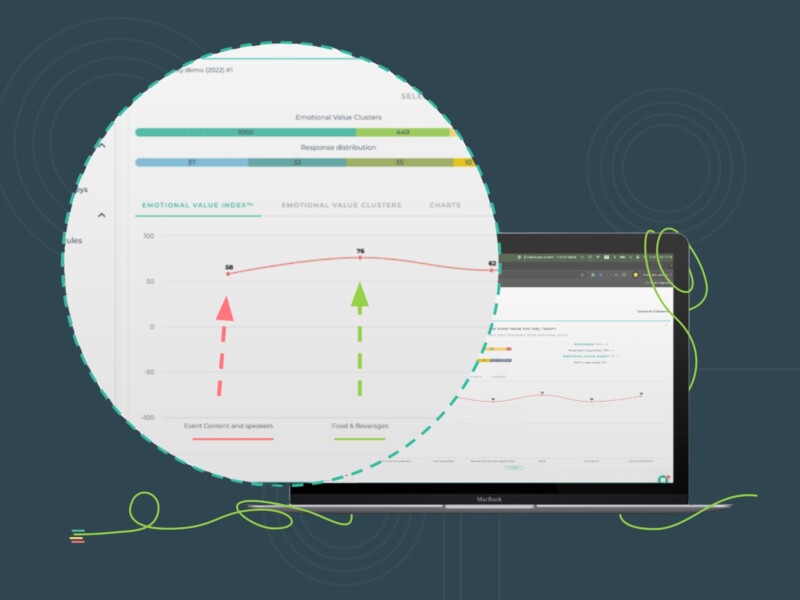Happiness As A Core Need
Happiness is a core need of our human existence. Our purchases and interactions with businesses happen on a daily basis, and make up a large chunk of our lives. Why should personal happiness be separate from our commercial interactions? We buy with our feelings. According to our own data, 20% of customer purchases can be attributed to an emotional feeling. This number is closer to 25% according to Adobe, and even more if we have previously been satisfied with a company’s service. The translates to a customer lifetime value which is up to 14x higher!
We’ve looked through millions of customer responses over the years and it has become more and more evident that happy customers are worth their weight in gold. One of our most frequently asked questions is: “How can we make customers happy without giving things away?” A good question. You can give away products and services with monetary value, but this is a short-term tactic. Happy customers can be loyal, but not all of them are. The key is to deliver positive interactions on a more personal level. We’ve put together a list of the 4 most important aspects to create the happiest customers in the world.
1. Look, Listen, And Show You Care
A needed base for any good relationship is mutual trust and to create that trust, the most important thing is the feeling that the other party actually cares about your feelings, opinions, and actions. This goes beyond a companies actions and is more about its internal philosophy. What are you looking to get out of your customers? If your answer is just a transaction, you have bigger, internal problems that need to be addressed.
Maslow’s hierarchy of needs is a theory often used by customer behaviour researchers to determine the root cause of purchase decisions. As we can see from the model, feelings of belongingness are the most important needs after physiological and safety needs. The need for interpersonal relationships motivates behavior. Examples include friendship, intimacy, trust, and acceptance, receiving and giving affection and love. These provide the basis for trust. Show your customer you care, that is the number one. It can be done in numerous ways but the easiest is to sincerely ask their feedback and follow up with them about what you have done to address their feedback.

2. Delight And Surprise
In order to dig deeper, we need to understand how customer experiences are created. Customer experience is always the difference between expectation and experience delivered. If the experience is better than expected, your CX is positive. If the experience is worse than expected, your CX is negative. You’ve probably heard someone describe a customer experience like “Meh, it was okay but I expected something… more“. This often happens when a company’s marketing promises something that they can’t deliver. You need to know your customer’s expectations – plain and simple. When you know your customer’s expectations, you will be that much closer to improving your CX.
3. Turn Happiness Into Loyalty
Now you have happy customers, what next? Well, as we know, happiness and loyalty are not one in the same. All this delighting and surprising is nice, but it’s up to you to take it to the next level. I great way to do this is upselling. Here’s an example:
You run an online store selling pencils. You just got an order for 25 premium pencils (woo!). Better yet, the customer has filled in the survey you placed on your order confirmation page. They left you some stellar feedback: “It’s my first time ordering from Pencils Direct and I could not have had a better experience!”.
You could just take the great feedback and keep doing what you’re doing. However a better strategy would be to leverage this positive momentum to make an upsell. Send an email to this person saying “Thanks for your purchase. Because you’re a first time customer, here’s a coupon for 15% off your next purchase”.
This way, an already positive experience has turned into an exceptional one, and this person will be much more likely to use that coupon than someone who receives a coupon in a cold outreach campaign. Upselling is the new black when it comes to your customer experience strategy.
By providing excellent experiences time and time again – you will see an increase in repeat purchase rate. This is your customer loyalty quantified – make sure you monitor it closely.
4. Take Care Of Your Employees!
Last but definitely not least. No business can run without the employees. If there is a company without employees and the happiest customers in the world, you can stop reading now… For the rest of us, the message is simple. Richard Branson said: “Happy employees create happy customers” and we couldn’t agree more. When looking at our own customer data, the happiest customers are created in companies where employees are treated with respect, are motivated and are happier. We see a direct correlation between the employee experience and the customer experience in the companies we work with.




